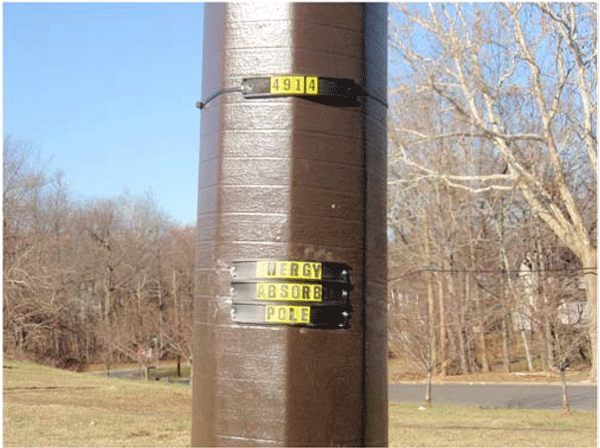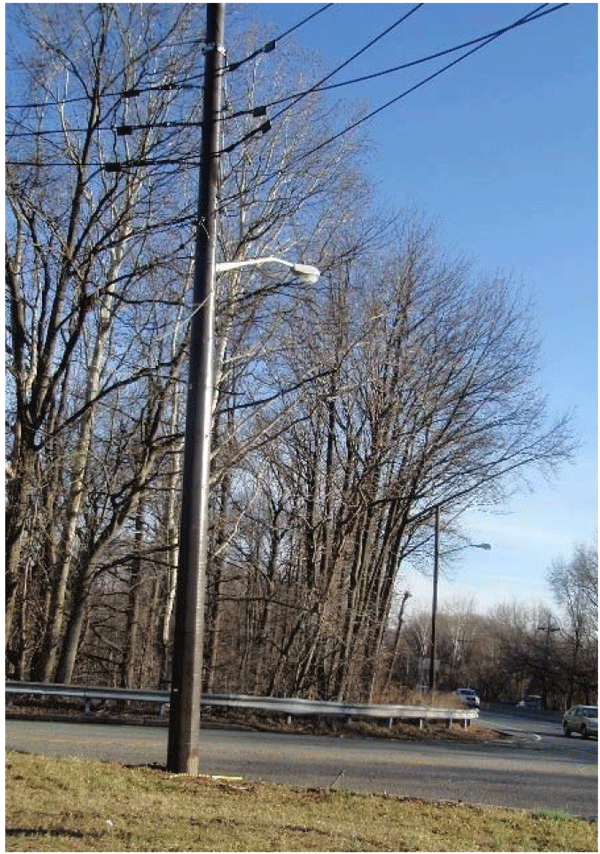Appendix H: Utility Pole Management in New Jersey
BACKGROUND
Objects permanently fixed in the clear zone of a roadway, such as trees and utility poles, may present obstacles for vehicles that depart the travel lane. Researchers from Rowan University, in Glassboro, New Jersey, identified approximately 260 sites on New Jersey State Highways with multiple utility pole crashes from the years 2003 to 2005. Researchers identified these sites by ranking poles with three or more recurring pole hits in one location, in accordance with the New Jersey Department of Transportation (NJDOT) Roadway Design Manual Section 8.2.4 under "Utility Poles. "The poles were also ranked by the crash hit/severity ratio of five or greater.
The Utility Management Unit of NJDOT is responsible for implementing the Pole Mitigation Program based on the list created by the Rowan University researchers. The Pole Mitigation Program is a formal program to proactively identify and remediate high risk utility pole crash sites in an effort to reduce crashes and injuries. Locations of poles that were within limits of active projects in design and planning stages were (and are currently) forwarded to the Division of Project Management for approval to be included in the mitigation program. NJDOT subsequently focused on the top 20 locations that were not a part of any active design projects from the original list of 260 sites.
PROGRAM DETAILS
One aspect of the Pole Mitigation Project is to pilot energy absorbing poles at some locations. The applicability of the poles is limited due to height and electrical appurtenance restrictions. NJDOT is using special poles made of fiberglass that collapse on impact and do not break away into the traffic. Initially NJDOT found it difficult to secure participation from the major utility companies on this project. However, upon holding informative discussions with the utility companies, NJDOT and the companies successfully reached an agreement to replacing and installing fiberglass poles when possible in accordance with all standards and guidelines and as specified in the NJDOT Utility Accommodation Policy. As a result of this coordination, six fiberglass poles have been installed.

Figure H-1. Photo. A close-up of the energy absorbing utility poles used as a part of NJDOT's pilot project.
RESULTS
After installation of the poles, the utility companies periodically conduct an inspection and submit a report to NJDOT as a part of the agreement. NJDOT can analyze the performance data of the poles and can establish policy regarding the usage of non-wooden poles. The utility companies have also agreed to replace the fiberglass poles if one is hit and damaged. NJDOT has made plans for data collection to establish a database containing the crash types based on geometry of the roadway in addition to other information that will be helpful to target sites where crashes with poles could be a problem.

Figure H-2. Photo. NJDOT used utility poles made from fiberglass that would collapse upon impact and not break away into the road.
CONSIDERATIONS
NJDOT recognizes the value in safeguarding the motoring public and minimizing the risk on the roadway and roadside. NJDOT highly recommends other agencies to initiate a clear zone management program, such as utility pole mitigation, if the resources are available.
CONTACT INFORMATION
NJDOT provided the information for this case study. Visit http://www.state.nj.us/transportation/ for more information. All images are courtesy of NJDOT.
For More Information:
Visit https://www.fhwa.dot.gov/safety/RwD
FHWA, Offi ce of Safety
Joseph Cheung
joseph.cheung@dot.gov
202-366-6994
FHWA-SA-15-084
